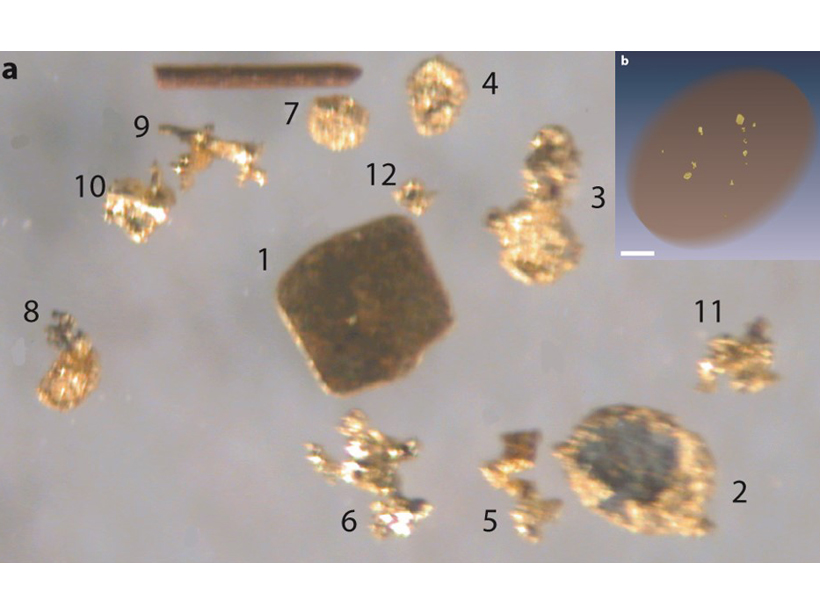Source: Journal of Geophysical Research: Solid Earth
A new method can measure small, discrete features, such as mineral grains or pores, in scans of solid objects produced by X-ray computed tomography. This approach, presented by Ketcham and Mote [2019], is aimed at giving the same answer for feature size, shape, and orientation regardless of the data resolution, as long as the feature is larger than the detection limit of the CT scan for instance. The authors test this method on a series of gold grains, notable for their high density and complex shapes. They find that the new method gives results that are superior to the classical approach of using a threshold, or constant gray value, to identify which data voxels (pixels with volume) show the feature of interest. This is very important for mineral explorations and has potential for digital rock.
Citation: Ketcham, R. A., & Mote, A. S. [2019]. Accurate measurement of small features in X‐ray CT data volumes, demonstrated using gold grains. Journal of Geophysical Research: Solid Earth, 124. https://doi.org/10.1029/2018JB017083
—André Revil, Editor, JGR: Solid Earth
Text © 2019. The authors. CC BY-NC-ND 3.0
Except where otherwise noted, images are subject to copyright. Any reuse without express permission from the copyright owner is prohibited.

